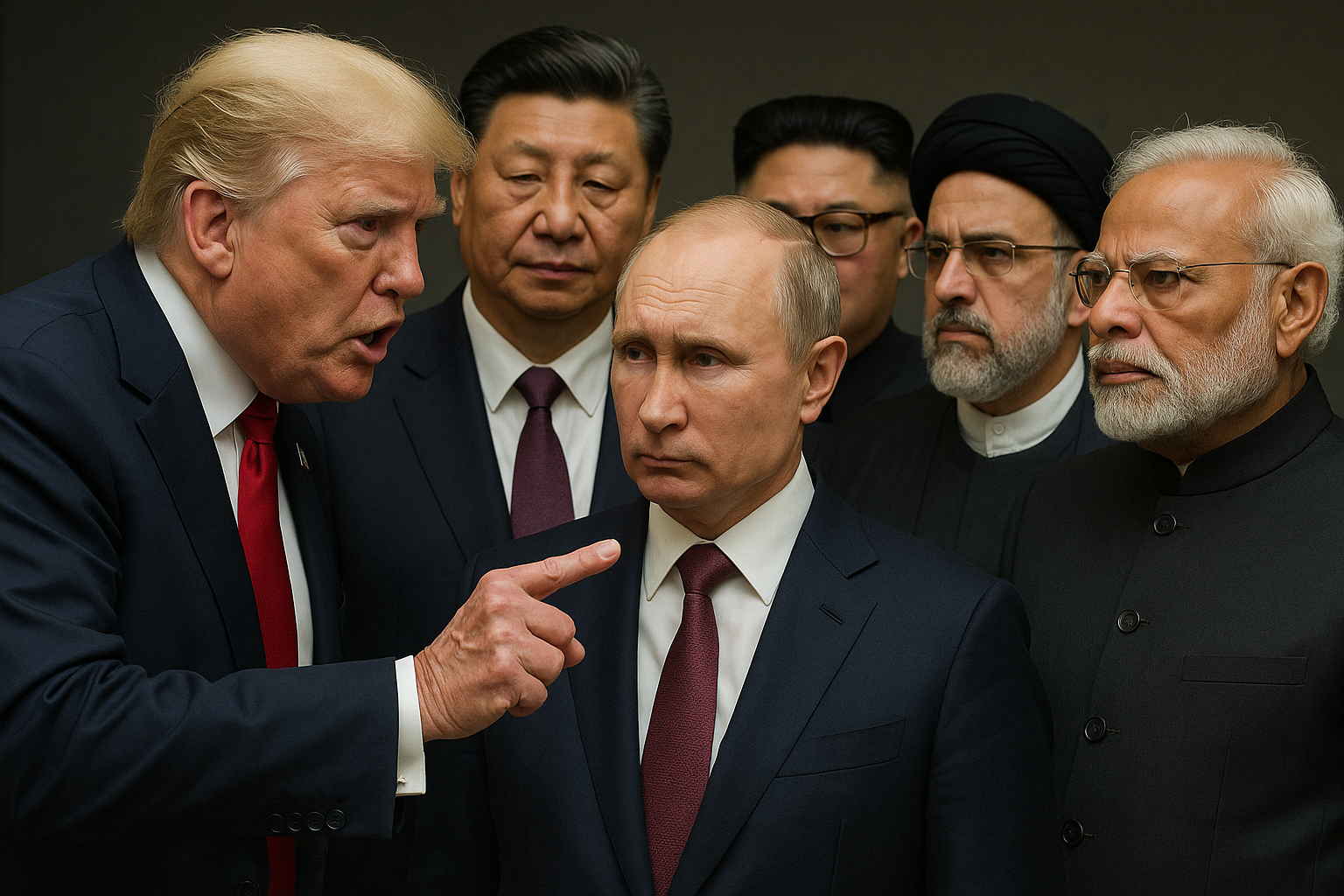Trump's Sanctions Gamble: Cornering Putin and His Global Allies
As geopolitical tensions escalate, President Trump is executing a bold, high-stakes strategy to end Russia’s war in Ukraine: the imposition of sweeping sanctions not only on Russia but on any nation that trades with it. This includes U.S. allies and major global economies such as India and China. With an August 8 deadline looming, Trump has made it clear—comply, or face economic punishment. But with defiance from Moscow and silence from several of its allies, the world is bracing for what could become a tipping point in global power dynamics.
Trump’s Sanctions Offensive
At the core of the current pressure campaign is the Sanctioning Russia Act of 2025, which authorizes:
Up to 500% tariffs on countries purchasing Russian strategic goods.
Immediate 25% tariffs on Indian exports, punishing New Delhi’s continued reliance on Russian oil.
A looming threat of 100% secondary sanctions for countries that do not cut economic ties with Russia.
Trump has paired this economic leverage with military posturing, including the deployment of two U.S. nuclear submarines and a public demand for a Ukraine ceasefire by August 8. The ultimatum is designed to break Russia’s momentum and choke its economy through global isolation.
Putin’s Dismissive Defiance
President Vladimir Putin has publicly stated that he “doesn’t care” about the deadline or U.S. threats. Backed by a growing coalition of anti-Western nations—referred to by some analysts as the “Axis of Upheaval”—Putin appears unmoved. This bloc includes:
China: Moscow’s largest trade partner, continuing to purchase oil, natural gas, and weapons systems. China and Russia are bypassing U.S. financial systems through alternative currency settlements.
Iran: Partnering with Russia on military cooperation and sanctioned goods trade. Both nations support proxy warfare against Western interests.
North Korea: Engaged in military aid exchanges with Russia, including weapons for food and declarations of mutual defense.
India: Despite being a U.S. strategic partner, India maintains significant oil and arms contracts with Russia, asserting its own economic sovereignty.
These countries are working toward a post-Western international order—undermining U.S. sanctions architecture and replacing it with regional pacts, BRICS alternatives, and resource-driven diplomacy.
A Glimpse Into the Abyss: Worst-Case Scenario
If the August 8 deadline arrives without a ceasefire or meaningful response from Russia, Trump has promised to escalate. But this aggressive strategy could backfire, triggering a worst-case scenario with global implications:
1. Global Trade War
100% U.S. tariffs are imposed on China, India, Brazil, and others.
Retaliation follows: these nations strike back with counter-tariffs.
Trade routes fracture, causing major disruptions in energy, food, and technology.
2. Energy Crisis
Russian oil shipments are halted or embargoed by the West.
Shadow fleets face seizure, and black-market pricing spikes.
Global oil surpasses $200/barrel, igniting global inflation and recession.
3. Financial Realignment
The BRICS nations formalize a new non-dollar settlement system.
De-dollarization accelerates; U.S. financial leverage erodes.
Emerging markets begin dumping U.S. Treasuries, destabilizing bond markets.
4. Military Escalations
Russia increases its offensive in Ukraine.
North Korea launches missile tests or new nuclear provocations.
Iran activates proxies in Iraq, Syria, or against Israel.
U.S. and NATO are pulled into a multi-front security crisis.
5. Global Diplomatic Collapse
The UN Security Council splinters.
The world polarizes into two economic and military blocs:
U.S., EU, NATO, Japan, South Korea
Russia, China, Iran, North Korea, India, Brazil, South Africa
6. Domestic and Global Unrest
Inflation and food shortages trigger protests in South Asia, Africa, and Latin America.
Political polarization deepens in the U.S., amid rising fuel costs and public anxiety.
The Stakes: More Than Just Ukraine
While the U.S. aims to corner Putin and compel peace in Ukraine, the collateral consequences of this strategy could reshape the global order. The gamble lies in whether Trump’s aggressive use of sanctions will fracture Putin’s alliances—or push the world into a dangerous era of multipolar conflict.
The next few days could mark the beginning of a new Cold War—one no longer defined by ideology, but by economic warfare, fractured diplomacy, and global resource competition.
References
Reuters. (2025, July 29). Trump's short fuse could set off Russian oil sanctions timebomb.
Associated Press. (2025, August 2). Trump wields tariffs to sway Putin on Ukraine.
Washington Post. (2025, August 2). Secondary sanctions needed to pressure Russia effectively.
The Times UK. (2025, August 1). Putin says expectations for Ukraine ceasefire are too high.
Wikipedia. Sanctioning Russia Act of 2025, China–Russia relations, Axis of Upheaval.
Atlantic Council. (2025). Global consequences of U.S. sanction escalation.
Financial Times. (2025). De-dollarization and BRICS alternatives rising.
Reddit. (2025, August). Putin and Kim pledge mutual support.

